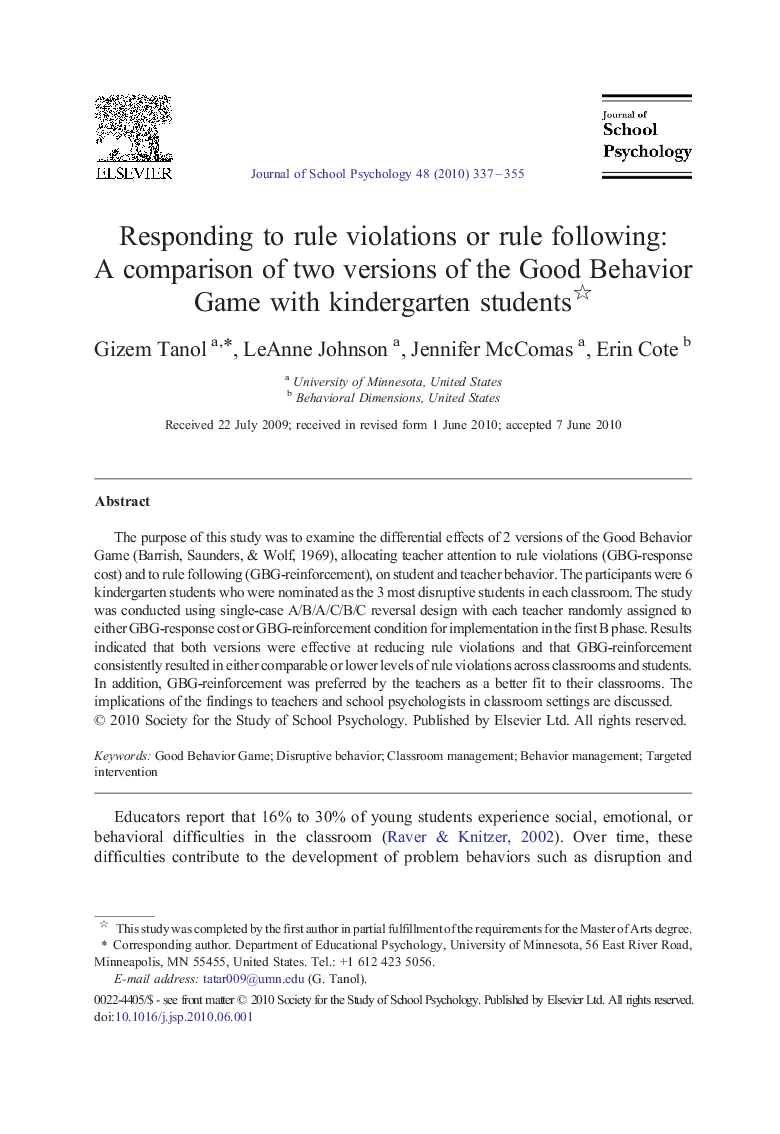| Article ID | Journal | Published Year | Pages | File Type |
|---|---|---|---|---|
| 363603 | Journal of School Psychology | 2010 | 19 Pages |
The purpose of this study was to examine the differential effects of 2 versions of the Good Behavior Game (Barrish, Saunders, & Wolf, 1969), allocating teacher attention to rule violations (GBG-response cost) and to rule following (GBG-reinforcement), on student and teacher behavior. The participants were 6 kindergarten students who were nominated as the 3 most disruptive students in each classroom. The study was conducted using single-case A/B/A/C/B/C reversal design with each teacher randomly assigned to either GBG-response cost or GBG-reinforcement condition for implementation in the first B phase. Results indicated that both versions were effective at reducing rule violations and that GBG-reinforcement consistently resulted in either comparable or lower levels of rule violations across classrooms and students. In addition, GBG-reinforcement was preferred by the teachers as a better fit to their classrooms. The implications of the findings to teachers and school psychologists in classroom settings are discussed.
